5 use cases of AI for creating architectural images
Why use AI to produce architectural images? Discover 5 use cases of AI for architects to design faster and extend your creativity.

AI is revolutionizing the world of architecture, particularly in the creation of project images by architects and interior designers.
But what are the use cases of AI for creating architectural images?
There are indeed many, as well as numerous tools for creating architectural images.
If you've been following the development of AI in architecture, it can be a bit challenging to sort out what is interesting but not yet very applicable.
And what is now more established that you need to look at quickly to avoid being overtaken by architects using AI!
1- Finding Project Inspirations
Architects haven’t waited for AI to find inspirations for their architectural projects.
Moreover, it's important to note that finding inspiration for new project ideas is an integral part of an architect's work.
Finding inspiration, an essential step for creatives
As everyone knows, creators always draw inspiration from what has already been done to find new ideas.
In fact, whether at the beginning of the project or during the technical design phases, searching for inspiration and references is always important.
One might search for:
- buildings of the same type, for example, "a house by the sea"
- examples of architectural treatment of a particular building element, such as "green roofs"
- or even more abstract project concepts that can be found in other arts like visual arts
There are already plenty of ways to find inspirations or references:
- architect monographs
- social media: Instagram, Pinterest...
- architecture project platforms: Architizer, Archicool...
Benefits of seeking inspiration as an architect
But AI adds another possibility with particular advantages. For instance, you can make a very precise request for what you want via a precise prompt.
So, you don't need to make an effort of imagination or use techniques like collage to put together fragments of inspiration. On the contrary, AI can assemble this for us in a matter of seconds!
It also provides ideas on projects that do not exist, such as what a completely transparent house would look like?
The possibilities AI offers for imaging imaginary architecture projects are dizzying! And they are waiting to be used creatively.
Which tools to generate inspirational images in architecture?
There are many AI tools to generate architectural images, and for simple inspirational images, the choice is even greater.
Since realism is often a request, as well as a style close to architectural images, Midjourney and Stable diffusion are the most obvious choices to start with.

2- Creating Renderings from a Schematic 3D
To create realistic images of an architectural project, one usually models a 3D using modeling software like Archicad, Revit, Sketchup...
Then, once the project has enough detail, it is possible to produce a realistic rendering using software like Enscape, Lumion, Twinmotion, or V-ray.
This process allows precise control over light, materials...

But to get a rendering with character that doesn't look like a synthetic image, this process is long and often outsourced for the most important phases of a project like architecture competitions.
Moreover, the calculation of the final image itself can also take hours!
Since these realistic architectural renderings are long and costly to make, they are usually done only at specific moments in the project, like competitions.
And of course, it's not easy to change everything if issues are noticed at the last moment!
The advantages of renders with AI
Conversely, renders with AI are very quick to make, provided you've learned to create images with AI.
AI can manage with a relatively simple "control image." The reference image ensures that AI accurately represents our project and not a whimsical view. This can be a schematic 3D, a sketch, or even a crumpled paper!
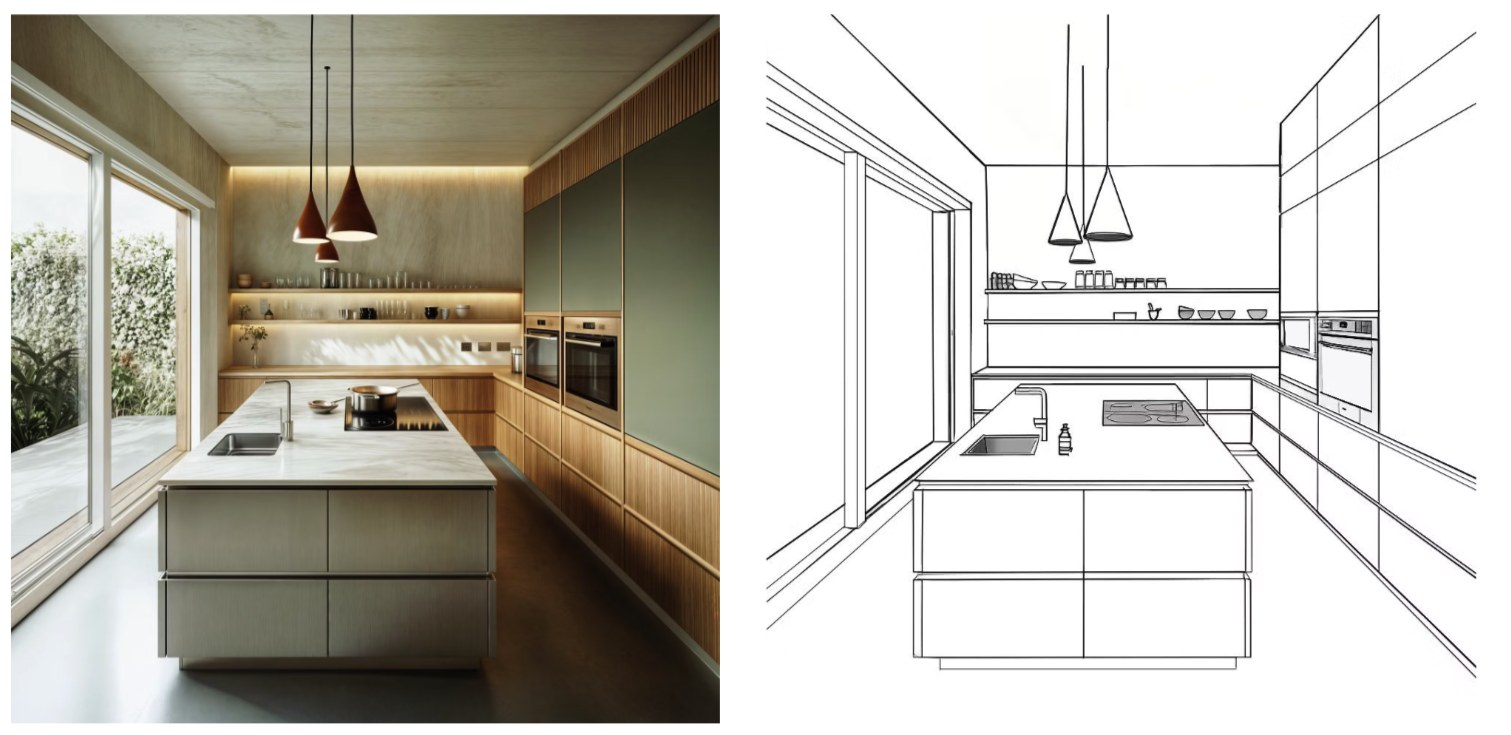
We are far from the existence of carefully modeled designs for a classic photorealistic 3D render.
AI is also very flexible regarding what needs to be modeled.
No urban context? Not a problem, AI can invent it!
No libraries of plants or furniture? Not an issue, AI has seen plenty in its training process!
In contrast, renders with AI, notably using Stable Diffusion, can be less precise, as we don't control everything 100%.
There can be inconsistencies, but tools evolve quickly, and AI allows for a more Agile approach.
Thus, it may be preferable to lose a bit of precision.
To gain speed, allowing more frequent interactions with clients, for example, and converge more quickly towards an optimal architectural solution.
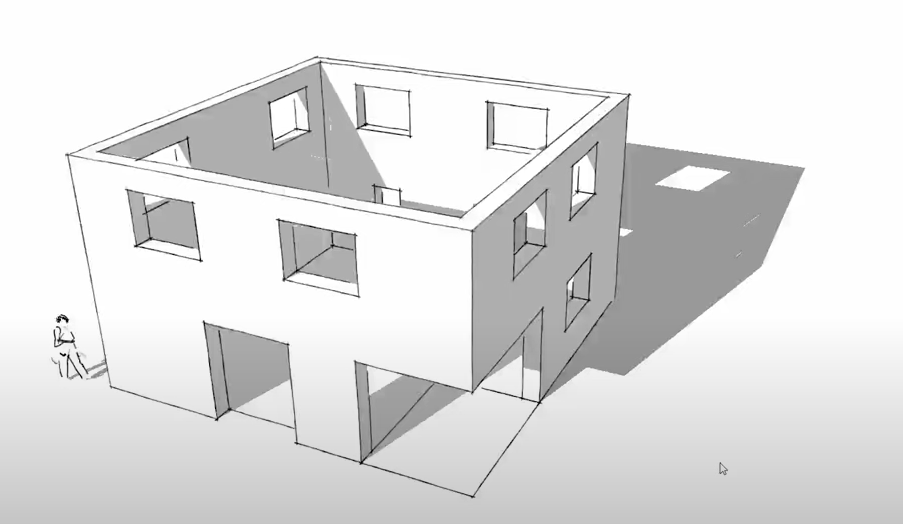
3- Creating a Render from a Simple Sketch
For a long time, sketches were relegated to the initial phases of an architectural project and served only as a guide for the architect's intention.
Yet, AI could breathe new life into sketches and serve as a powerful tool to guide AI in image generation. The process of generating a rendered architectural image from a sketch with AI is not very different from the previous case.
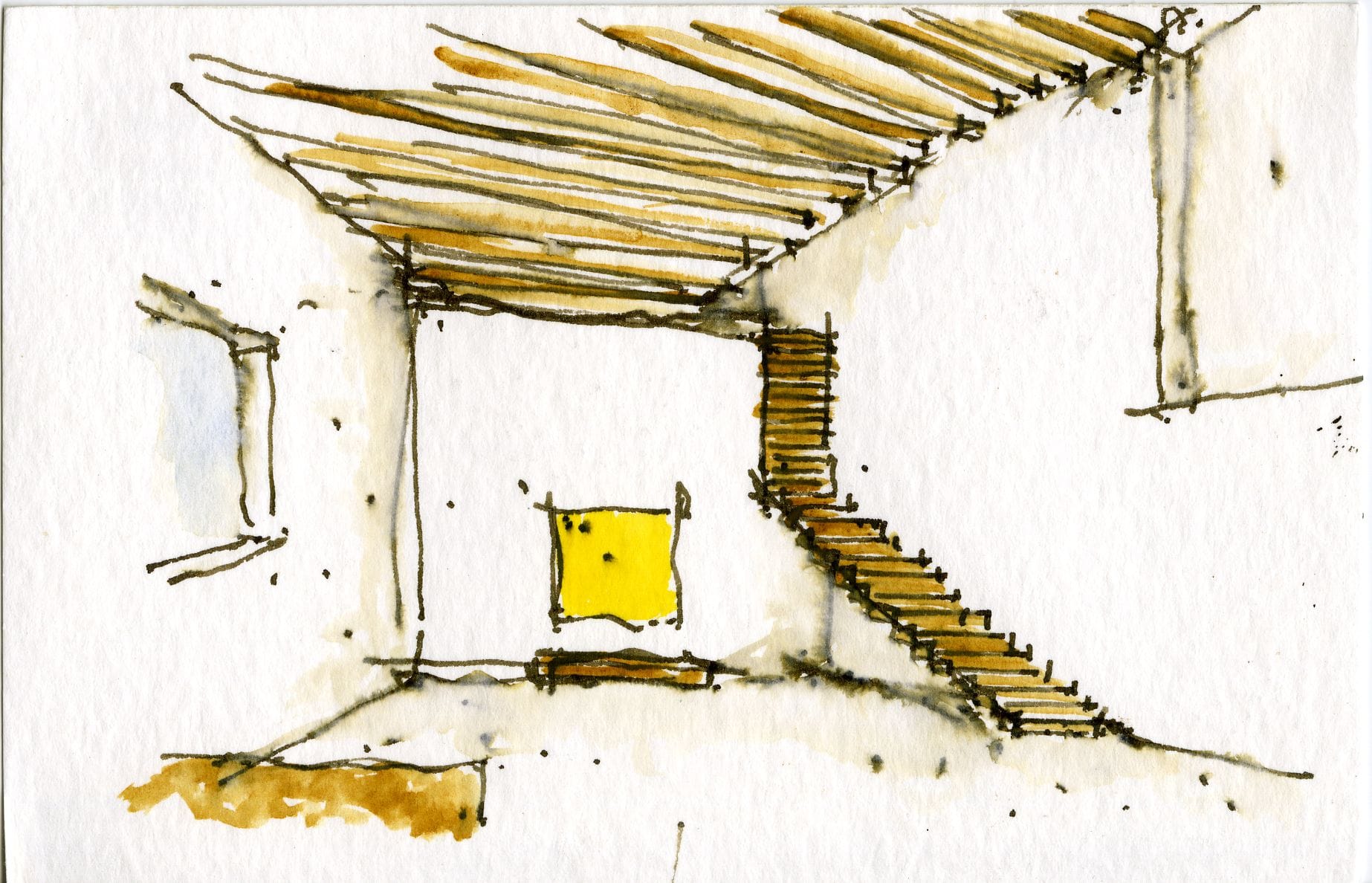
4- Modifying an Apartment Design with AI
If you work in renovation or as an interior designer, it's common that you may not want to significantly alter a space with AI.
However, you might want to compare several design solutions.
What would it look like if?
- If we change the wall to pink
- If we convert the roof to an open wooden pergola
- If we add a pool
This is a question many ask—whether architects, interior designers, or simple homeowners looking to renovate their homes.
AI allows you to do all this very simply, from a base image
- and a prompt
- or by choosing a predefined style (modern, Scandinavian…)
- or finally by using more advanced techniques with Stable Diffusion
Thus, one can retouch images of apartments, houses, and public spaces in minutes.
And you no longer need to model or spend hours on retouching.
In this use of AI, the base image is modified while maintaining precise control over the final result. For example, elements of the image not involved in the renovation should remain unchanged.
There are numerous AI tools for modifying a design from an existing image. They provide more or less control depending on the intended audience:
- Individuals looking to renovate their apartment or home
- Real estate agents or developers wanting to do home staging or perspectives of new housing
- Interior designers or designers wanting to quickly propose a project to their client using AI
- Or architects working on renovation projects
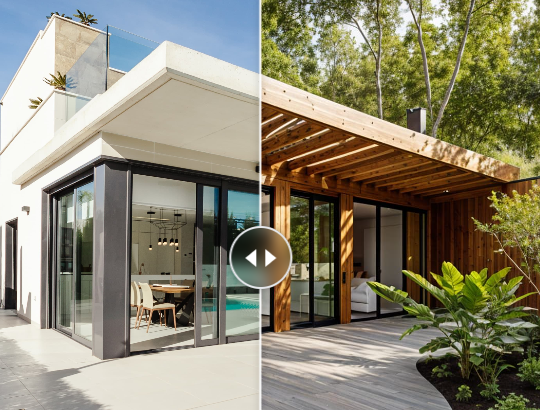
5- Enlarging a Low-Resolution Image
AI is not just for creating extraordinary images of utopian projects. In fact, it's a whole methodology of image creation that can be applied to tasks we used to do in Photoshop!
For example, image scaling, which can cover different cases:
- The image is too small because of a bad camera
- It's a scan of an old photo
- Or it's an image generated with AI
Which, due to its functioning, must fit the size of the model's training images, such as 1024 x 1024.
So if we want to do something with AI-generated images, we need to be able to scale or upscale them.
But the scaling process with AI, unlike Photoshop, creatively invents pixels!
And thus adds detail that didn’t exist, instead of blurring.
A whole world of possibilities opened up for using small images with AI!
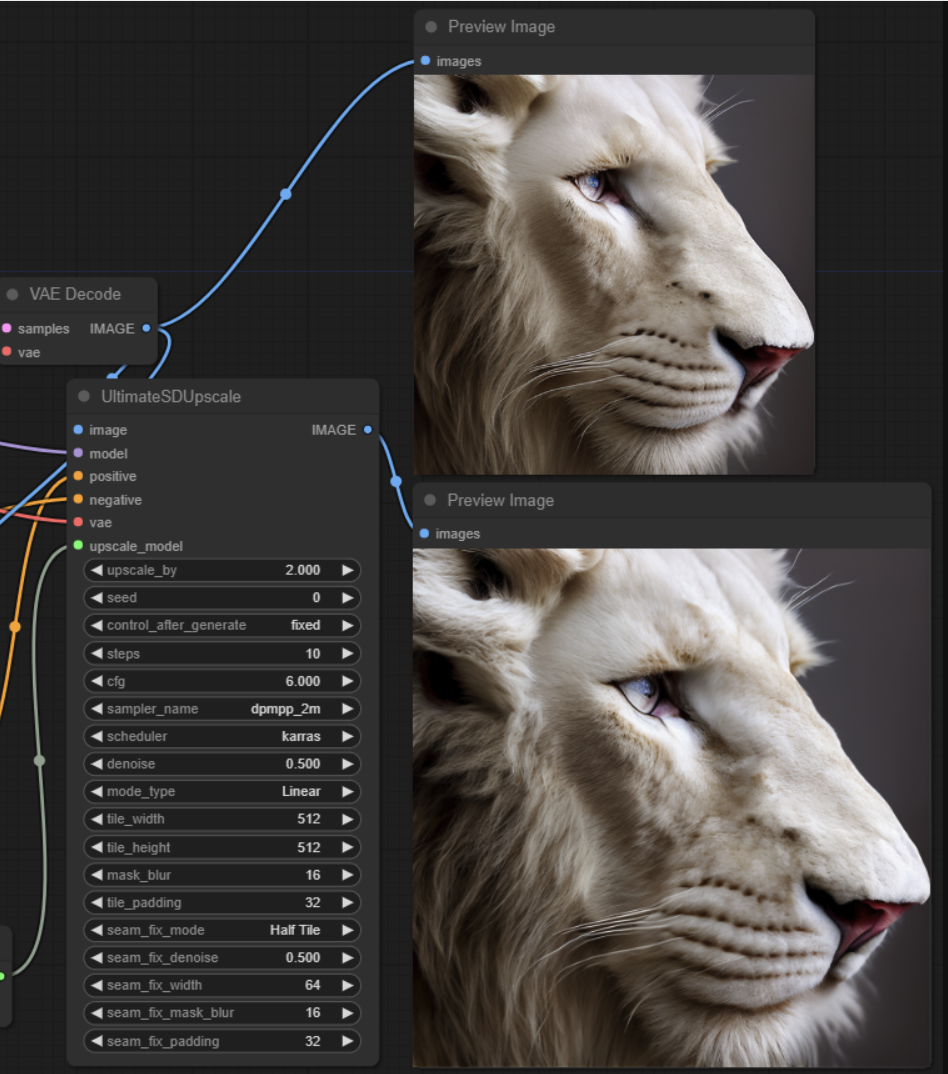
Train Yourself in AI for Architectural Images!
The uses of AI to generate architectural images more easily, more quickly, and with enhanced creativity, are numerous.
If you wish to train yourself in using AI for architectural images, you might be interested in my AI image training for architects.
In this training, I teach you how to create your own image production system with AI using Stable Diffusion. To find inspirations, create renders, or quickly modify images with AI.